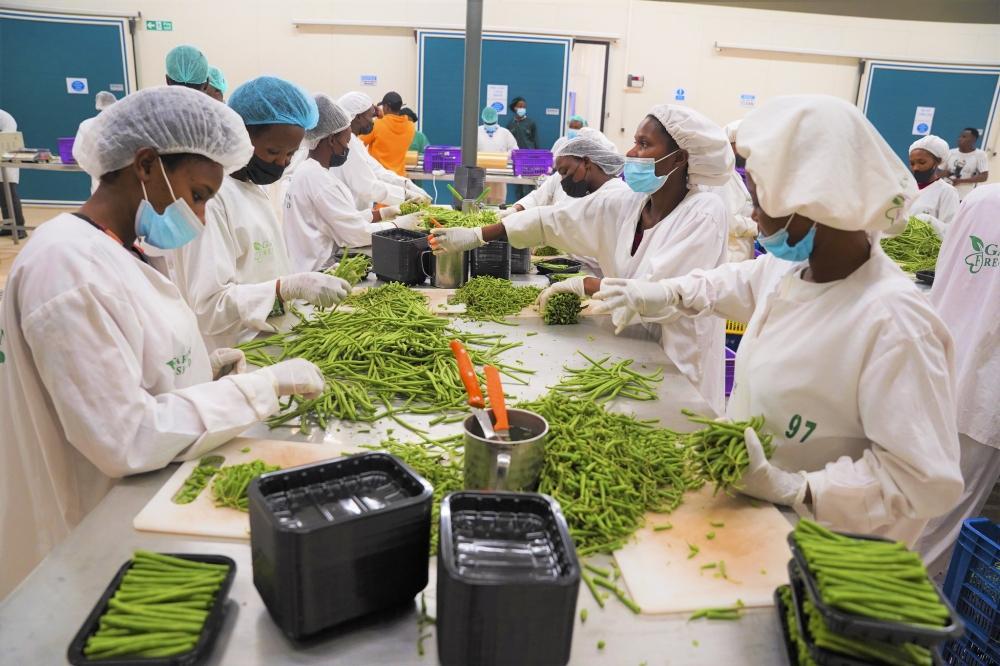Africa-Press – Rwanda. The Rwandan government targets $7.3 billion in annual export revenues by 2029, as part of its National Strategy for Transformation (NST2).
Rwanda’s export raked in $4.3 billion (about Rwf6 trillion) in 2024, up from $3.5 billion in 2023, Prime Minister Edouard Ngirente told Parliament on March 28.
Export revenues have risen from $1.9 billion in 2017.
Appearing before the two houses of Parliament, Ngirente, who gave a presentation on government actions to increase industrial production and exports, said the target would be achieved through coordinated efforts.
“The focus will be on expanding the quantity and value of various exported goods (export diversification). Efforts will also be made to boost industrial production, mineral extraction, and tourism,” he said.
“Currently, new industrially processed products such as cement and construction materials (iron and steel) are being exported, along with agricultural products like flowers, vegetables, and fruits,” said the Prime Minister, adding that export products will continue to increase in value and type.
Some of the major exports are minerals, which raked in $1.7 billion (Rwf2.38 trillion)in 2024, with gold alone representing about 88 per cent of the money. Mineral export revenues have grown from $373 million in 2017.
He added that newly discovered minerals, such as beryllium and lithium, will drive the projected growth in addition to cassiterite, coltan and wolfram.
Rwanda also benefits from re-exports — products initially imported with the purpose of re-exporting to foreign markets. These re-exported goods mainly include petroleum products, machinery and engines, vehicles, and food products.
According to the Prime Minister, Rwanda’s economy grew at an average rate of 9.1 per cent from 2021 to 2024, surpassing pre-pandemic growth rate of 7 per cent and exceeding regional economies, which averaged 5.5 per cent. Sub-Saharan African economies grew by 4.1 per cent on average.
The Minister of Trade and Industry Prudence Sebahizi told The New Times that the development of the industrial sector, especially manufacturing and value addition sub-sector, will contribute significantly to export promotion.
“Rwanda is looking to diversifying its exports away from traditional goods and tapping into high-potential exports and value chains,” Sebahizi said.
“Investment attraction will focus on regional niche sectors such as pharmaceuticals and the automotive industry, as well as other key sectors including agro-processing, horticulture, and mining, to drive export diversification and value creation.”
The minister added that Rwanda is also prioritising services exports, particularly tourism.
“Tourism revenues are expected to grow from $0.6 billion in 2023 to $1.1 billion in 2029. The strategic emergence of Rwanda as a Meetings, Incentives, Conferences, and Exhibitions (MICE) hub will continue to foster this priority sector,” Sebahizi said.
He noted that complementary sectors such as global business services and the development of creative industries will also contribute to service exports and shape Rwanda’s export landscape in both the short and long term.
“Continued strategic policy intervention and collaboration with regional, continental, and global partners through trade promotion agreements and events will ensure further market penetration for Rwandan goods and services and enhance export revenue growth,” said Sebahizi.
He noted that developing the industrial sector would drive the projected growth and reduce the trade deficit.
“Policy work and strategies to attract investors in priority sectors will be crucial drivers of Rwanda’s industrialisation, ultimately leading to increased manufacturing and sustainable export growth in both the short and long term,” he said.
For More News And Analysis About Rwanda Follow Africa-Press






